Barbara Ross's Blog, page 13
May 9, 2016
Weddings, Weddings, Weddings, Weddings
by Barb, in frigid New England, STILL waiting for spring
Hi all. I handed in the manuscript for Iced Under a week ago, so now I’m on a bit of a writing break. That’s a good thing because my daughter is getting married in May 21, so it’s wedding, wedding, wedding, 24/7 around here.
One of the things we’ve done is go through old family wedding albums.
Here’s my grandmother, Eleonore Kimbel Taylor, on June 17, 1926. She was married to my grandfather on a Thursday afternoon in her home on Soundview Avenue in New Rochelle, New York. Her wedding gown was short in the fashion of the times. The photographer told her to pull her veil in front of the dress for some of the photos, because he thought styles would soon change and her dress would look “ridiculous.”
Here’s a photo of my in-laws, Bill Carito and Olga DiIanni, on their wedding day in June of 1951. They were married at Saint Mary’s Church at in the North End of Boston. After the ceremony, there was a sit-down luncheon for 100 people, and then, in the evening, a reception for 650 people at the Manger Hotel by North Station, (which later became the Madison Hotel and even later, disappeared altogether). At the evening reception, there was an orchestra and the guests danced until 1:00 AM. I noticed in the photos that my father-in-law changed from a morning suit to a dinner jacket between the events.
Here are my parents, Rick Ross and Jane McKim at their wedding in June of 1952. This looks like the moment of the toast. This was a much smaller affair than my in-law’s. My father and both my grandfathers were only children, so there wasn’t a lot of family to invite. The reception was held at the Woman’s Club of Maplewood, New Jersey. That’s my grandmother, Eleonore Taylor Ross, from the first photo above, off to the side.
The “leaving the church for the reception” photo must have been a classic in the 50s.
Here are Bill and I in April 1976. (Yes, we did get a lot of patriotically themed wedding gifts.) Never have there been a more clueless bride or groom. Ours was only the second formal wedding either of us had ever attended. Whenever anyone asked us what we wanted, we said, “traditional,” oblivious to the fact that this meant something quite different to each set of parents. (See above.) At my mother’s insistence, we had a live orchestra at the reception, which was held at the Westmoreland Club in Wilkes-Barre, PA, and I often think my invitations were the last ones on earth printed from an engraved plate. But we didn’t have a sit down meal, just heavy hors d’oeuvres, which must have come as quite a shock to Bill’s Italian-American family. And our Presbyterian ceremony was about ten minutes long, which also must have been a shock.
Nonetheless, we had a blast, as you can see from the looks on our faces.
Here are my son, Robert Carito, and daughter-in-law, Sunny Basham at their wedding in 2008. They met at a playwriting summer session at the University of Virginia when he was sixteen and she, fifteen. It was a long courtship, but when they announced their engagement eleven years later, it was a scant nine weeks before their wedding in March. The wedding was a lovely, intimate affair with parents, grandparents, siblings, and a very few close friends in a private room at Mistral in the South End of Boston. They wrote their own vows which still make me cry when I read them.
So many weddings. So many couples. So many different ways to do it.
Here’s Kate Carito and Luke Donius’s engagement photo. Soon there will be another wedding photo to add to the family collection.
Readers, what about you? Wedding stories? Warning: right now, I only want to hear the good ones. (We’ll save wedding-disasters-I-have-known for another time–after May 21.)
Filed under: Barb's posts Tagged: Eleonore Kimbel Taylor, Eleonore Taylor Ross, Jane McKim, Kim Ross, Luke Donius, Olga DiIanni Carito, Richard Morrow Ross, Robert Carito, Sunny Basham, William Carito

March 14, 2016
How Do Writers Really Feel about Reader Reviews?
by Barb, back in Massachusetts, consumed by a book deadline and an upcoming wedding
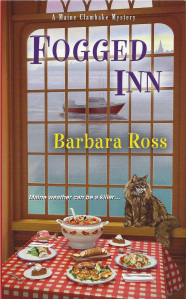 The fourth book in my Maine Clambake Mystery series came out recently, so it’s given me plenty of opportunity to think about reader reviews.
The fourth book in my Maine Clambake Mystery series came out recently, so it’s given me plenty of opportunity to think about reader reviews.
Of course, there is no one way writers feel about reviews. All the Wickeds keep track of traditional media and blog reviews (and are grateful for them), but when it comes to reader reviews, we are all over the map. One of us never looks at Goodreads or Amazon, one of us checks obsessively, constantly looking for new reviews, and the rest fall on a spectrum in between.
To check for new reviews on Amazon, if the number of reviews shown for any book listed on your author page ticks upward, click on the number, then click on See all xx customer reviews, then scroll down and flip the Sort by choice to Most recent.
Yes, you are right, I have just outed myself as the one who “checks obsessively.”
 I think the main reason I check so frequently is because my business background taught me to hunger for constant and frequently updated data, and that is something us lay people just don’t get in the publishing biz. Apple can probably tell you within half an hour every iPhone that’s been sold, what the configuration and price was, and who sold it to whom. Publishers claim they can only reconcile book sales after six months, and can only inform authors about it six months after that. I admit it. It makes me crazy.
I think the main reason I check so frequently is because my business background taught me to hunger for constant and frequently updated data, and that is something us lay people just don’t get in the publishing biz. Apple can probably tell you within half an hour every iPhone that’s been sold, what the configuration and price was, and who sold it to whom. Publishers claim they can only reconcile book sales after six months, and can only inform authors about it six months after that. I admit it. It makes me crazy.
So I look for data anywhere I can find it, and reviews, especially number and frequency of reviews being added on Amazon and Goodreads, seem as good a proxy as any.
 This means I read them all. The good ones are gratifying, of course. The less good ones are interesting, too. In every book I try something different, not to be perverse, and not because I am at all bored with the traditional/cozy form, but to avoid repetition and because I believe the tale I’m telling demands it.
This means I read them all. The good ones are gratifying, of course. The less good ones are interesting, too. In every book I try something different, not to be perverse, and not because I am at all bored with the traditional/cozy form, but to avoid repetition and because I believe the tale I’m telling demands it.
For example with Fogged Inn, the book starts with the discovery of the body. The book moves forward in time from there, but Julia goes back to the night before the murder in conversations with people and in her personal reflections throughout the book. So not true flashbacks, but kind of. There are a lot of suspects, because each suspect is really a couple, that multiples the suspect pool by two. Finally, without spoilers, the resolution of the mystery is not a traditional one for an amateur sleuth.
Some readers react well to one or more these elements and say so in their reviews, and some don’t like one or more. Some people hate one or more. I am fascinated with the reactions.
The reviews that are the hardest to read are the ones that point out a spot in a book I know is weak. “Oh, man, ya caught me,” or “Darn, I didn’t paper that over as well as I thought,” is usually my reaction.
And some reviews are just really terrible. People hate the writing style or the protagonist or the story. Just hate it.
People who have never put anything out to the public to be judged often wonder how writers, or people working in any part of the arts or entertainment fields, deal with those “just hate it,” reviews.
Luckily, the “hate it” reviews are usually mixed in with several “loved it” reviews. Sometimes, the book is the wrong genre or in some other way a bad fit for the reader. As Sherry’s daughter says, “You can have the sweetest peach, but if the person you offer it to doesn’t like peaches…”
 Editing the Level Best Books series taught me how huge a role personal taste plays in people’s reactions to fiction. Us four editors, aside from being of two different genders, were probably demographically indistinguishable from one another from a pollster’s perspective. Yet, there were stories some of us loved and others hated. There were stories people argued passionately for that other people didn’t care about at all. And when we sent our little book out into the world, we were always surprised by which stories were recognized by awards or nominations and which were specifically mentioned in reviews. Honestly, most of the time I guessed wrong about what our standouts would be.
Editing the Level Best Books series taught me how huge a role personal taste plays in people’s reactions to fiction. Us four editors, aside from being of two different genders, were probably demographically indistinguishable from one another from a pollster’s perspective. Yet, there were stories some of us loved and others hated. There were stories people argued passionately for that other people didn’t care about at all. And when we sent our little book out into the world, we were always surprised by which stories were recognized by awards or nominations and which were specifically mentioned in reviews. Honestly, most of the time I guessed wrong about what our standouts would be.
With novels, it’s really all about the math. The number of reviews is probably a decent proxy for how well a book has sold, and the averages may tell you something about the quality, but the individual bad reviews don’t mean that much. In fact, the more popular a book is, the more likely people outside it’s core audience are to try it. So a book selling tons will usually have a lower Goodreads or Amazon average rating than a book selling only to its niche readers and no farther.
I know as a consumer of movies, when I look at Rotten Tomatoes, I look at average ratings for critics and for fans (and ponder it a bit if one is wildly different from the other in either direction) and base my decision to watch on those averages, not on the individual reviews.
One thing typical reader reviewers (as opposed to book bloggers and others who also leave reviews on Amazon, etc.) may not know is that when you follow reviews as closely as I do, you get to know who some frequent reviewers are, and you’re watching them just as they’re watching you. One man who has left glowing reviews for all the Maine Clambake Mysteries and even went to the Cabbage Island Clambake was disappointed with Fogged Inn. I feel badly about that and hope he stays around for the next book. Another reviewer has trashed every one of my books on Goodreads and vows every time not to read another one. I always think, “Good, don’t,” (despite everything I just said about averages and number of reviews). And yet she returns again and again.
I described these reviewers to a non-writer friend, and he found it creepy and stalkerish, both their interest in me and my knowledge of and interest in them. But I find it fun, and a part of my world. And I’m grateful to all them. Really.
Filed under: Barb's posts Tagged: amazon, Cabbage Island Clambake, Fogged inn, goodreads, maine clambake mysteries, rotten tomatoes

February 23, 2016
Old Friends
by Barb, who is packing to go north, and sighing a lot
 It’s release day for the fourth Maine Clambake Mystery, Fogged Inn! It’s the first of three books that take us through the off season in Busman’s Harbor, when the Snowden Family Clambake is closed and the tourists have gone home. Busman’s Harbor is a quieter, cozier place. Having made the (braver) decision at the end of Musseled Out to stay in town rather than return to her life in New York, Julia Snowden and her boyfriend Chris Durand are trying to make a go of running a dinner restaurant, sharing space with her friend and landlord Gus who serves up breakfast and lunch.
It’s release day for the fourth Maine Clambake Mystery, Fogged Inn! It’s the first of three books that take us through the off season in Busman’s Harbor, when the Snowden Family Clambake is closed and the tourists have gone home. Busman’s Harbor is a quieter, cozier place. Having made the (braver) decision at the end of Musseled Out to stay in town rather than return to her life in New York, Julia Snowden and her boyfriend Chris Durand are trying to make a go of running a dinner restaurant, sharing space with her friend and landlord Gus who serves up breakfast and lunch.
“Jule-YA! There’s a dead guy in the walk-in.”
The story begins when Gus finds the body of a stranger in his walk-in refrigerator. But who is the dead man? Is he connected to any of the diners who were in the restaurant the night before? Or to the car accident that trapped them there for hours?
When I wrote the first draft of Fogged Inn, I thought it was about coming home, since each of the retirees in the restaurant on that fateful night had returned to Maine to live. But, as so often happens to me, as I got to the end of the first draft, I discovered it wasn’t about that at all. It was about Old Friends.
Once I figured that out, I remembered the commencement address given by actor and writer Mike O’Malley at my daughter’s graduation from the University of New Hampshire in 2006. I admit I went into the event rolling my eyes. Former Presidents Bill Clinton and George H. W. Bush had already been announced as the joint speakers for 2007, and it didn’t help that my daughter explained who O’Malley was by referencing his show on Nickelodeon. (Of course, now that I know who he is, he’s )
It turned out, as it so often does, that my low expectations were dramatically wrongheaded. O’Malley’s speech was heartfelt, wise, and resonated all the more because he had sat where those graduates were sitting. The relevant portion of the speech is this:
“Try as often as you can to give tribute to your friends, to stay in contact, to be at their momentous occasions. Drive across the country and go into debt to go to their weddings, fly across the country and be with them when their parents pass away. You cannot make any new old friends.”
(The whole address is worth a read at http://en.wikipedia.org/wiki/User:IanManka/Mike_O%27Malley
Then, this fall, long after the book had been turned in, my husband and I lost two old friends in a matter of months and the theme of the book became even more personal and meaningful. At their wakes, I saw people I have known and cared about for years, but whom I rarely see. My generation is not like my children’s. We didn’t have social media to keep us up on what was going on in each others’ lives. We didn’t have e-mail, and long distance calls were expensive and reserved for emergencies. We lost touch more than we should have.
At the second wake, an old friend said, “Why haven’t we seen each other in forty years?” The truth is we had kids, we got more responsibility in our careers, some of us moved to the suburbs, our lives were busy and crazy and satisfying. But there is absolutely nothing like those old friendships, where you can pick up where you left off as if no time has gone by.
At the end of the book I name some of those old friends of my youth. But as the months have gone along since I turned it in, I’ve realized there were even more who should have been listed.
I hope you enjoy Fogged Inn.
Filed under: Barb's posts, Book Birthday Tagged: Fogged inn, maine clambake mysteries, Mike O'Malley, UNH graduation 2006

February 12, 2016
Meanwhile to the South
 Yesterday, Jessie and Kim told you how hard they are working and how disciplined they are being up there in New England.
Yesterday, Jessie and Kim told you how hard they are working and how disciplined they are being up there in New England.
Today, Liz and I thought we’d offer another perspective.

Barb and Liz drinking a margarita and mojito (respectively) on Mallory Pier at sunset, Key West

Sunset

With our friend, author Lucy Burdette, at the Hemingway House. (Weren’t Kim & Jessie in NH just talking about how wonderful Lucy is?)

Hemingway House

You know Liz couldn’t resist the Hemingway cats

Hemingway cats have six toes

Typewriter

Local microlibrary with a book by one of Key West’s best known living authors, Judy Blume

Autograph from the “real” Lorenzo from Lucy Burdette’s Key West Food Critic Mysteries
Sending love from Key West to all the hardworking Wickeds up north and readers everywhere!
Filed under: Barb's posts, Liz's posts Tagged: Ernest Hemingway, food critic mysteries, Hemingway House, Key West, lucy burdette, six-toed cats

February 8, 2016
A Recipe from Fogged Inn
by Barb, in Key West, where it’s a frigid seventy degrees. Brrrrrr.
 Hi all. I’m started to get excited about the launch of Fogged Inn, the fourth book in my Maine Clambake Mystery series which is coming on February 23rd.
Hi all. I’m started to get excited about the launch of Fogged Inn, the fourth book in my Maine Clambake Mystery series which is coming on February 23rd.
Fogged Inn takes place in the off-season, when the Snowden Family Clambake is closed. To fill the long winter months, my protagonist Julia Snowden and her boyfriend Chris Durand have taken on the task of running a restaurant in their friend Gus’s place. Gus serves breakfast and lunch, as he has for fifty years. Julia and Chris take over for dinner, or as Gus calls it, “suppah.”
Julia and Chris are walking a fine line with the restaurant, which they call, “Gus’s Too.” They want it to be a casual neighborhood gathering place, but since it is the only eat-in restaurant open on the peninsula during the off-season, they also want it to be a place where a couple can have a “date night.” To attract a regular winter clientele, Julia and Chris know they have to keep the restaurant affordable, but to be a date night destination, they have to offer up something a little special. Plus, the meals have to be prepared and served with a skeleton staff–it’s only Julia and Chris as they find their way in the beginning. The food has to be creative to keep Chris’s interest, but not so creative that they lose their core customers. Finally, Gus is adamant that they not serve anything on his menu, which rules out burgers and dogs, lobster and clam rolls.
My husband, Bill, who develops the Maine Clambake recipes, and I had a lot of fun trying out recipes to suit Gus’s Too’s limited and ever-changing menu. (They offer only three entries, a chicken, a beef and an fish, along with three appetizers and two deserts every night.) There seemed to be constraints piled upon constraints. But happily, Bill threaded the needle and came up with some great ones.
Today I offer you–
Gus’s Too Date Night Stuffed Chicken Breast with Lemon-Tarragon Sauce
Adapted for home use, of course.
Ingredients
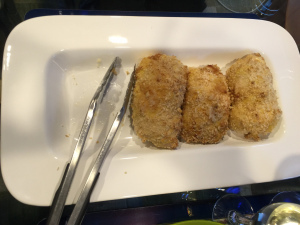 Chicken
Chicken
4–6 ounces pancetta, cut into ¼-inch cubes
8 chicken cutlets pounded ¼-inch thick, 1/8-inch thick at the edges
1–2 cups baby spinach leaves
4–6 ounces Fontina cheese, cut into 1/8-inch cubes
2 cup panko bread crumbs
1 cup grated Parmesan cheese
1 cup flour
3 eggs
Sauce
3 Tablespoons unsalted butter
3 Tablespoons flour
2 cups chicken broth, warmed
2 Tablespoons lemon juice
1 Tablespoon tarragon, chopped
Instructions
Fry the pancetta over medium heat until browned.
Lay each cutlet flat on a board. Put a small handful of spinach leaves and 1 Tablespoon each of pancetta and Fontina cubes in the center. Roll the cutlet into a packet, folding the sides into the center and pinching to seal.
Put cutlets in the refrigerator for at least 1 hour to complete sealing process.
Preheat oven to 350 degrees.
Mix bread crumbs and Parmesan in a bowl and put half on a plate. Put flour on another plate, and lightly beat eggs with a fork in a separate bowl.
Remove chicken from the refrigerator. Roll each packet first in flour, being sure to shake off excess, then in egg, and finally in bread crumbs. Place on a wire rack set on a sheet pan.
Cook chicken for 40–45 minutes or until an instant read thermometer inserted in the center reads 165 degrees.
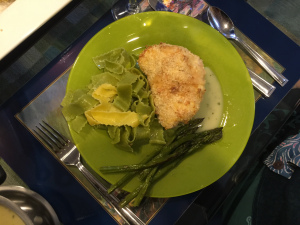 In the last twenty minutes or so of cooking time, melt butter in a saucepan over medium heat. After it stops foaming, add flour and whisk together constantly for about 3 minutes.
In the last twenty minutes or so of cooking time, melt butter in a saucepan over medium heat. After it stops foaming, add flour and whisk together constantly for about 3 minutes.
Begin adding broth slowly, whisking together, and continue to slowly add broth, whisking all the while.
Cook on medium-low heat until sauce thickens, 3 to 5 minutes.
Add lemon juice and chopped tarragon and cook for 1 minute more.
Season with salt and pepper to taste.
Serves: 4
If you try it, I hope you enjoy!
Filed under: Barb's posts Tagged: date night, lemon tarragon chicken, maine clambake mysteries

January 11, 2016
Novella Update
Barb, suffering away in lovely Key West. (Okay, not really.)
In August I announced that I was writing a Christmas novella for Kensington. At the time, I brimmed with optimism. Since my short stories are always too long, and my novels always too short, I thought the novella might be my natural home in the fiction world. In my blog post, I said I would check back in.
Since the novella is done and due on Friday, I thought this might be the time.
First things first, a cover reveal.
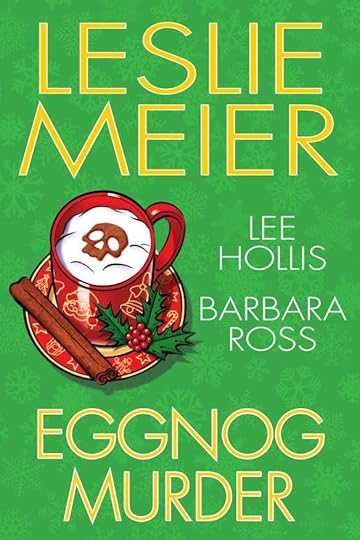
What do you think? I really like it. It fits with Leslie Meier‘s covers, and also quite nicely with the previous Christmas collections Kensington has published featuring Joanne Fluke, Laura Levine and Leslie. I am thrilled to be included, along with Leslie and Lee Hollis. I love the little skull floating in the eggnog cup.
I enjoyed working on the story very much. Before I wrote it, I read a bunch of Christmas crime novellas. They seemed to fall into two groups. Some authors used the structure of the traditional longer mystery–a victim, a pool of people with means, opportunity, and motive, and a sleuth who interviews them all and looks for clues to solve the crime. Other authors went a different route using more of a short story-like structure to write not so much a whodunnit?, but a whattheheckisgoingonhere? I went with the latter.
The most fun about the novella was that it was the first time in a long time that I wrote a book in the season in which it took place. This holiday season was crazy warm in in the east, even in Maine, and my story takes place in New York City and Busman’s Harbor during a more traditional early winter. So I couldn’t run outside to soak up the atmospherics, but I could run down the road to do research. Need a reminder of what L.L. Bean’s holiday decorations look like? No problem.
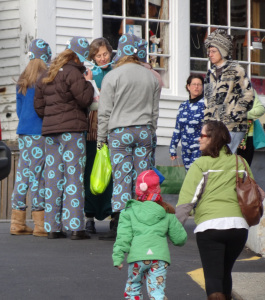 I loved incorporating the holiday traditions of my little town in Maine into the novella. For example, the Boothbay Harbor Pajama Party, when everyone gets up at six a.m. and Christmas shops in their pjs. (No kidding. I’ve written more about it here.) I incorporated other holiday traditions l’ve loved, including my cookie baking day and a festival of trees. Boothbay Harbor has one of these, but for the novella I borrowed liberally from the one Vida Antolin-Jenkins used to take me to on the naval base in Newport, RI when we were young mothers. Highly fictionalized, of course.
I loved incorporating the holiday traditions of my little town in Maine into the novella. For example, the Boothbay Harbor Pajama Party, when everyone gets up at six a.m. and Christmas shops in their pjs. (No kidding. I’ve written more about it here.) I incorporated other holiday traditions l’ve loved, including my cookie baking day and a festival of trees. Boothbay Harbor has one of these, but for the novella I borrowed liberally from the one Vida Antolin-Jenkins used to take me to on the naval base in Newport, RI when we were young mothers. Highly fictionalized, of course.
The length, 25,000+ words, a hundred or so pages, was, indeed, a natural one for me.
You’ll have to wait until next fall to tell me what you think, but I’m happy to be turning this tale in on Friday.
Filed under: Barb's posts Tagged: Boothbay Harbor Pajama Party, Eggnog Murder, joanne fluke, Kensington Books, Laura Levine, Lee Hollis, leslie meier, LL Bean Christmas, Vida Antolin-Jenkins

December 14, 2015
Christmas Letters–Yea or Nay?
From Barb, in Massachusetts where it is so warm it’s hard to believe it’s almost Christmas
So gang, holiday letters, how do we feel about them?
I have a friend who always starts his, “Well here it is, the bane of our existence, ‘The Christmas Letter’ wherein we tell our friends about our fabulous lives, great vacations, what our overachieving children are doing and how our lives are so much better than theirs…”
This is followed by a humorous account of his year that never fails to give me a smile.
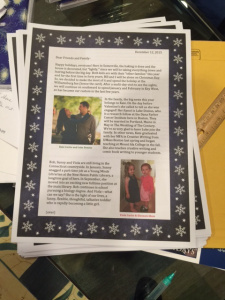
This year’s Christmas letter
I started sending my Christmas letter in 1995. I had recently left a place where I’d worked for twelve years. Though I was more than done with the job, I missed the people, and in those pre-internet, pre-social media days, it seemed like a good way to keep in touch. I also sent the letters to my husband’s large family and other friends we didn’t see from one end of the year to the next.
I had to make some refinements to my distribution system over time. When she was alive, it drove my mother crazy that her sister in Chicago got the letter and she did not. My explanation, “You already know everything in it,” did not suffice, so immediate family, including my parents, brother, and later, when they were grown, my kids were added to the list. Some years, when we would see my husband’s aunts and uncles through the year, I would skip sending them “the letter.” That didn’t work, either. “No Christmas letter this year?” they would ask. So they got themselves added permanently.
The letter, of course, goes with the whole card ritual. I always start looking for my cards in October and pick them with care, and they carry a theme for the year. So the year I signed my Maine Clambake contract, I chose Crane’s dancing lobsters. The next year, when the book came out, it was a gorgeous illustration of antique books from the Museum of Fine Arts. Last year, there was an Eiffel Tower on the card, commemorating our two and a half weeks in Paris during the summer.
I admit that I am a seasons person. I always change up the decor in our house for the time of the year. When I worked, I loved the rhythm the business brought, the January sales meeting, the July user conference, the fall industry conference, and then budgeting, planning, board approval, close-out the year, begin again. That, added to our family rhythms, governed by the kids’ school schedule, made the world feel a little safer and more predictable, a good counter-balance to the frequent unknowns of working in a startup and raising teenagers.
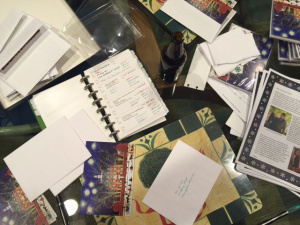
The scene of the crime…
Card-writing became a part of my Christmas ritual, fit around work and other obligations, along with cookie-baking, decorating, gift buying and wrapping, throwing and attending holiday celebrations. For years, I went to my company’s holiday party in Vancouver and wrote the Christmas letter on the Saturday plane ride home. It was the emotional transition point from closing out the year at work to focusing on family traditions.
I love the letters, which document our family life for twenty years. And I love my little ritual that I carry on. But that’s all about me. I often wonder, in this age of Facebook and Twitter and Instagram, what I am doing. Who, at the far corners of my existence, doesn’t know what my family and I are up to (or couldn’t find out, if they were really curious). I’m even documenting my life via this blog.
I carry on, because I still love to get them from others, but every year it becomes a bit more of a decision.
So how do you feel, dear readers. Holiday letters, yea or nay?
Filed under: Barb's posts Tagged: Christmas letters

November 6, 2015
New Editors for Level Best Books!
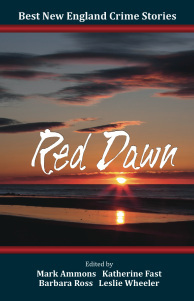 Hi All. Barb here. We don’t usually use the blog to break news (except book contracts), but this news involves the handing of the baton from one of us to another of us, so we figured the blog was a good place.
Hi All. Barb here. We don’t usually use the blog to break news (except book contracts), but this news involves the handing of the baton from one of us to another of us, so we figured the blog was a good place.
As regular readers know, for the past six years, I’ve been a co-editor, co-publisher at Level Best Books. Level Best was founded in 2003 and helmed by Kate Flora, Susan Oleksiw, Skye Alexander and Ruth M. McCarty. They published seven annual anthologies of short crime stories by New England authors. Then my group of editors, Mark Ammons, Katherine Fast, Leslie Wheeler and me, took over and did six editions.
It was a true labor of love, and by that I emphasize both the love and the labor. In March, we announced the edition that releases today, Best New England Crime Stories 2016: Red Dawn, would be our last. We put out a call for new editors.
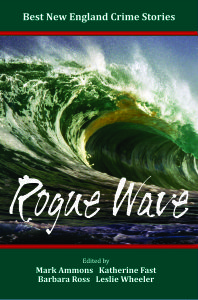 It was slow going at first. Many highly qualified individuals approached us, but we were looking for a team, and a team we thought could be successful.
It was slow going at first. Many highly qualified individuals approached us, but we were looking for a team, and a team we thought could be successful.
Imagine our happiness when a team did approach us that had all the requisite skills and experience, as well as a demonstrated love of short crime fiction and an intention to carry on the traditions of Level Best. Imagine my overwhelming happiness when one of the new editors turned out to be one of our own Wicked Accomplices, Kim Gray! Kim’s fellow editors will be Verena Rose, Harriette Sackler, and Shawn Reilly Simmons, whom many of you may know from their work on the Malice Domestic conference.
Congratulations to the New Editors.
Here’s the full announcement.
New Editors at Level Best Books
LEVEL BEST BOOKS TO CONTINUE WITH NEW EDITORS/PUBLISHERS
Group Plans to Publish 2016 Anthology
Boston, November 6, 2015, Level Best Books announced today that it will continue publishing its annual anthology with a new group of editors at the helm. Level Best, an independent publishing cooperative, has released a collection of crime stories by New England authors every November for the last thirteen years. The current editors, Mark Ammons, Katherine Fast, Barbara Ross and Leslie Wheeler, recently announced that the 2015 collection, titled Best New England Crime Stories 2016: Red Dawn would be their last.
Retiring editor Mark Ammons said, “The new editorial team was by far the most qualified to approach us. We know they will be superb custodians of the Level Best brand.”
The new editors plan to publish a new collection in November 2016 titled Windward, in time for Crime Bake, the annual mystery writers conference sponsored by the New England Chapters of Mystery Writers of America and Sisters in Crime.
“Level Best has produced high-quality anthologies of New England-focused, short crime fiction for many years and we plan to continue the tradition,” said Verena Rose, a member of the new editorial team. Level Best was founded in 2003. Kate Flora, Susan Oleksiw, Skye Alexander and Ruth M. McCarty produced the first seven editions.
The new editors/publishers are all well-known members of the mystery community. Two of the four have received Agatha nominations for their work.
Kimberly Gray is a winner of the William F. Deeck-Malice Domestic Grant, a member of Sisters in Crime and blogs for Scenes from a Baltimore Kitchen and The Wicked Cozy Authors. Her most recent short story entitled “Boardwalk Bound” was published in The Boardwalk Anthology in 2015.
Verena Rose was co-editor of the Agatha Award-nominated Not Everyone’s Cup of Tea: An Interesting and Entertaining History of Malice Domestic’s First 25 Years, published by Wildside Press in 2013. She is also a co-editor of the upcoming Malice Domestic Anthology, Malice 11: Murder Most Conventional, to be published by Wildside Press in 2016.
Harriette Sackler is the author of numerous mystery short stories and is a past Agatha nominee. She has been offered a contract for publication of Love Lives Here: The Story of House with a Heart Senior Pet Sanctuary, a work of non-fiction.
Shawn Reilly Simmons is the author of the Red Carpet Catering mystery series published by Henery Press. Her short story “A Gathering of Great Detectives” will appear in the Malice Domestic Anthology, Malice 11: Murder Most Conventional, to be published by Wildside Press in 2016.
Filed under: Barb's posts Tagged: Best New England Crime Stories, harriette sackler, Kim Gray, Level Best Books, Red Dawn, shawn reilly simmons, Verena Rose

October 15, 2015
The Very Good Reason
by Barb, still recovering from her knee replacement, but getting stronger everyday
Hi. Barb here and today I want to talk about that point where plot and character meet–where it becomes apparent to your sleuth that he or she is the only one who can solve the mystery, bring the guilty to justice, or even, save the world (if you’re writing a thriller.)
I’m talking about the Very Good Reason (or VGR).
I first heard about the Very Good Reason in a course taught by writer, editor and teacher extraordinaire, Ramona DeFelice Long. For the amateur sleuth, the Very Good Reason is why she gets proactively involved in (and not just caught up in) the investigation. For a thriller with an everyman or everywoman protagonist, the Very Good Reason is the reason they don’t just call the FBI, the CIA, the Pentagon, etc and be done with it. After all, that’s what almost any normal human would do. Why does your protagonist dig in instead of running in the other direction as quickly as possible?

It took me awhile to understand how vitally important the VGR is. The VGR is what flips your protagonist from passive to active. If your character is driving the investigation, they are also driving the narrative. They have goals in every scene. The reader straps himself in to go on the ride.
Can you write an amateur sleuth without a VGR? I have seen it done, where the sleuth is wandering around, overhearing stuff, learning things because she’s a part of the community and the professionals aren’t, and then she puts it all together at the end. But it’s hard to do well. Very, very hard. Because an aimless protagonist is usually going to result in an aimless narrative.
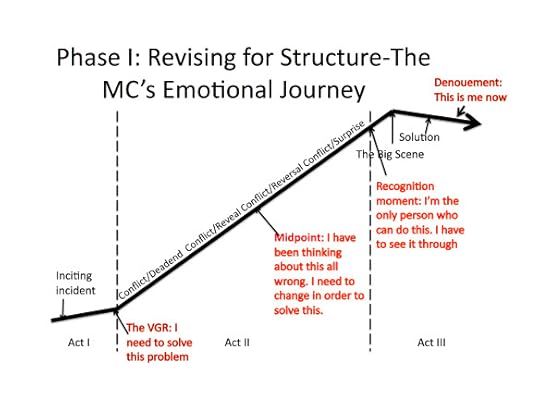
What are the VGRs? There are some that are so well used that they’re clichés. Your protagonist is the main suspect. Someone near and dear to her is a suspect. Someone near and dear to her may be the next victim. But even these require the writer to dig in, do more work and build a believable rationale that is unique to the sleuth and the story.
The above VGRs are often coupled an incompetent professional force. The bumbling country police. The arrogant FBI man with his own agenda. I don’t love these kinds of solutions unless they’re deeper and more interesting than that. I try to have my professionals work their own perfectly reasonable theory of the case, which may or may not happen to be the right one. And they may be hamstrung by laws and procedures that don’t fetter our amateur.
Finding the VGR is a huge challenge for people who write a long-running series. By the time the protagonist is done, everyone she knows may have been a victim or a suspect. I do think, as time and books go on, the author does get a bit of a gimme. If your sleuth has been involved in many investigations, she develops a reputation and people begin to proactively seek her help. Of course, there has to be a VGR she says yes to these requests.
 Does a professional need a VGR–a cop, an FBI agent, a spy? I think yes, but it’s different. My first mystery, The Death of an Ambitious Woman, featured a female police chief. She pursued the mysterious death of female executive relentlessly, over the objections of her mayor, her district attorney and some of the men on her force. While I was writing the book, early readers kept asking me, “Why does she do this?” I kept saying, “Because it’s her job.” And they kept saying, “That’s not enough.” Which always caused me to wonder, how do you do your job?
Does a professional need a VGR–a cop, an FBI agent, a spy? I think yes, but it’s different. My first mystery, The Death of an Ambitious Woman, featured a female police chief. She pursued the mysterious death of female executive relentlessly, over the objections of her mayor, her district attorney and some of the men on her force. While I was writing the book, early readers kept asking me, “Why does she do this?” I kept saying, “Because it’s her job.” And they kept saying, “That’s not enough.” Which always caused me to wonder, how do you do your job?
But of course, they were correct. Which I realized eventually. I needed a Very Good Reason. And that’s what made the book.
They only difference is, with a professional, you may not reveal the VGR early on, but rather dribble it out over the course of the book and bring it home during the climax. For professionals, I think of it this way. Of all the bar stories in your repertoire, why are you telling this one? Probably because it made a personal connection.
Understanding the VGR has truly helped me as a mystery writer. Of course, coming up with the right one for each book is still a huge challenge.
Readers, what do you think? Is the VGR important?
Filed under: Barb's posts Tagged: Ramona DeFelice Long, VGR

September 14, 2015
Maps in Books
by Barb, who’s headed in for knee replacement surgery tomorrow
I have a friend who says, “No book with a map in it can ever be all bad,” to which I heartily reply, “Amen!” I’ve loved books that contain maps going back to reading my mother’s 1935 edition of Winnie the Pooh.
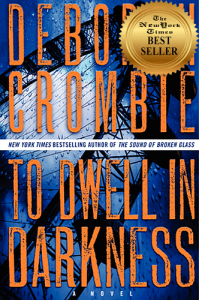 More recently, I’ve so enjoyed the maps by Laura Hartman Maestro in Deborah Crombie’s books. When a new book comes out, I’m excited to read the mystery and to see what has happened to Gemma and Duncan, because I am a huge fan and have been from the beginning of the series. But I’m also excited to see the map. I examine it before I start reading because Maestro’s hand-drawn maps are so aesthetically pleasing, but the maps don’t mean much before I’ve begun the book. It’s going back to them that gives me so much pleasure, layer upon layer over the course of the story. If you haven’t seen these wonderful maps, they are here. You can click on them to enlarge them.
More recently, I’ve so enjoyed the maps by Laura Hartman Maestro in Deborah Crombie’s books. When a new book comes out, I’m excited to read the mystery and to see what has happened to Gemma and Duncan, because I am a huge fan and have been from the beginning of the series. But I’m also excited to see the map. I examine it before I start reading because Maestro’s hand-drawn maps are so aesthetically pleasing, but the maps don’t mean much before I’ve begun the book. It’s going back to them that gives me so much pleasure, layer upon layer over the course of the story. If you haven’t seen these wonderful maps, they are here. You can click on them to enlarge them.
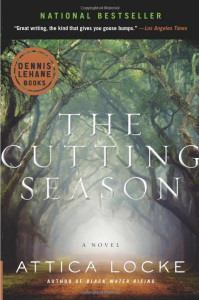 I once startled Attica Locke at a book signing at Newtonvile Books, when I opened The Cutting Season and exclaimed, “A map by Laura Hartman Maestro!” Attica was gracious, explaining that her publisher thought it was important for her readers to be able to visualize the “living history” sugar plantation where the story takes place.
I once startled Attica Locke at a book signing at Newtonvile Books, when I opened The Cutting Season and exclaimed, “A map by Laura Hartman Maestro!” Attica was gracious, explaining that her publisher thought it was important for her readers to be able to visualize the “living history” sugar plantation where the story takes place.
So when I read that Minotaur was doing a giveaway of a map of Three Pines, the fictional town at the center of Louise Penny’s Inspector Gamache mysteries, I was all over it. All you had to do to enter was to fill out a form telling Minotaur where you pre-ordered the latest, The Nature of the Beast.
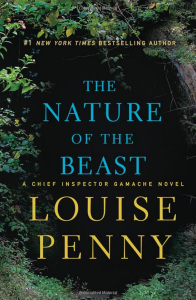 There was no question that I would buy The Nature of the Beast on release day. The prospect of having a Louise Penny novel to read over the long Labor Day weekend was too good to pass up. And I knew where I would purchase it–our local bookstore in Boothbay Harbor–Sherman’s Books & Stationery. So bing, bang, boom, I entered.
There was no question that I would buy The Nature of the Beast on release day. The prospect of having a Louise Penny novel to read over the long Labor Day weekend was too good to pass up. And I knew where I would purchase it–our local bookstore in Boothbay Harbor–Sherman’s Books & Stationery. So bing, bang, boom, I entered.
Two weeks ago a flat package from Minotaur showed up in my mail. I honestly wondered what it was, so much time had gone by. So it was a delightful surprise to open the flatpack and find my copy of the map of Three Pines.
It’s copyrighted, and I’ve looked all over the web to see if they’re using it promotionally, but couldn’t find it, so I’m not going to post it on the blog. You can see the piece of the draft they used to promote it here.
Louise Penny has said she resisted having a map done for years because she wanted readers to picture Three Pines in their own minds. This seems to me to be true for any well-rendered fictional location, but particularly so for Three Pines, which Penny tells us does not appear on any map or GPS. Even in the books, it is a place of the imagination. So, I opened the package with some trepidation.
 The Three Pines of the map is almost exactly as I had pictured it, which is a tribute to both Penny and the mapmaker, Rhys Davies–the same person who make this marvelous map for G.M. Malliet. I’m one to make up lots of stuff in my head–having clear pictures of characters and places that are sometimes at odds with what’s in the books. The houses of Three Pines weren’t labelled. Some I recognized instantly, but going forward I will need to pay more attention as various characters troop home from the bistro.
The Three Pines of the map is almost exactly as I had pictured it, which is a tribute to both Penny and the mapmaker, Rhys Davies–the same person who make this marvelous map for G.M. Malliet. I’m one to make up lots of stuff in my head–having clear pictures of characters and places that are sometimes at odds with what’s in the books. The houses of Three Pines weren’t labelled. Some I recognized instantly, but going forward I will need to pay more attention as various characters troop home from the bistro.
As for The Nature of the Beast–I loved it. It’s particularly appropriate that the map should come out now, because this book takes place entirely in Three Pines. Inspector Gamache has retired there, so there’s no back and forth in this book to Montreal or other parts of Canada.
All of this naturally made me wonder if I would ever like to have a map of Busman’s Harbor, the fictional location of my Maine Clambake Mysteries. As the series progresses, the town gets richer and fuller. We find out in Clammed Up that Gleason’s Hardware with an apartment above it is on Main Street, since several key scenes take place there. In Fogged Inn (Feb, 2016) we learn that next to Gleason’s is the double storefront of Walker’s Art Supplies and Frameshop. And on the corner of Main and Main, at the only stoplight in town, where Main Street curves back around, hugging the shape of the harbor hill and crosses itself, is Gordon’s Jewelry. Gus’s restaurant is in the back harbor, along with the marina, the shipbuilders, and Bud Barbour’s marine repair shop which appeared in Boiled Over. In Fogged Inn we learn that the Busman’s Harbor Yacht Club is also there. And then there’s what’s out on Eastclaw and Westclaw Points, and, of course, on Morrow Island.
So I think a map would be fun, but probably premature. I’m still filling in the town.
What about you, readers. Maps of fictional places, yay or nay?
Filed under: Barb's posts Tagged: Attica Locke, Busman's Harbor, deborah crombie, Fictional towns, Gin Malliet, Laura Hartman Maestro, louise penny, Rhys Davies, The Cutting Season, The Nature of the Beast, Three Pines











